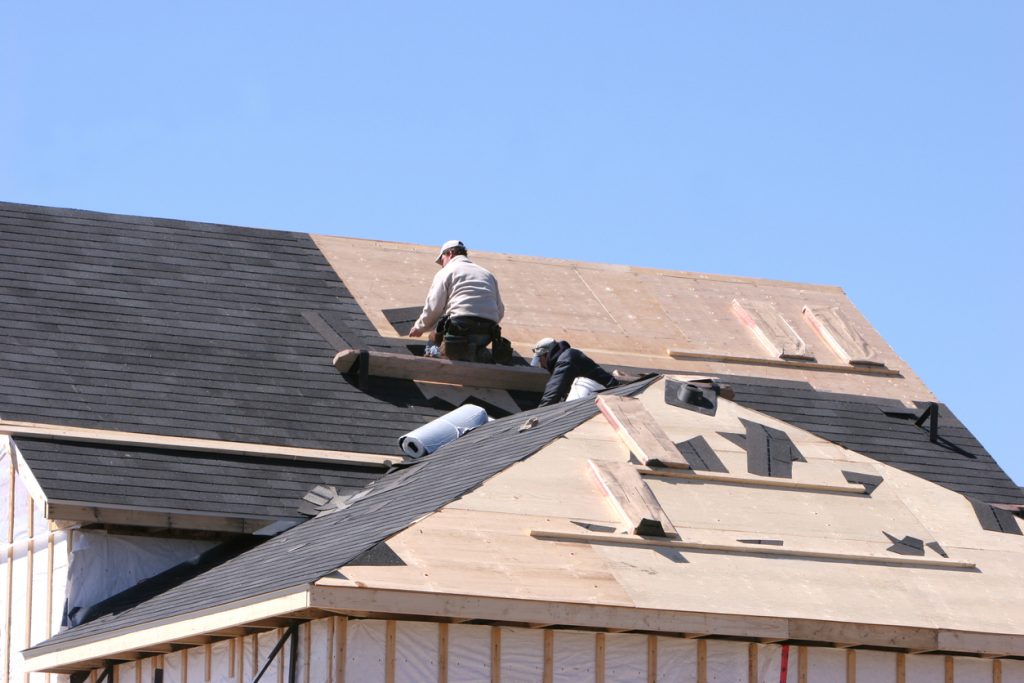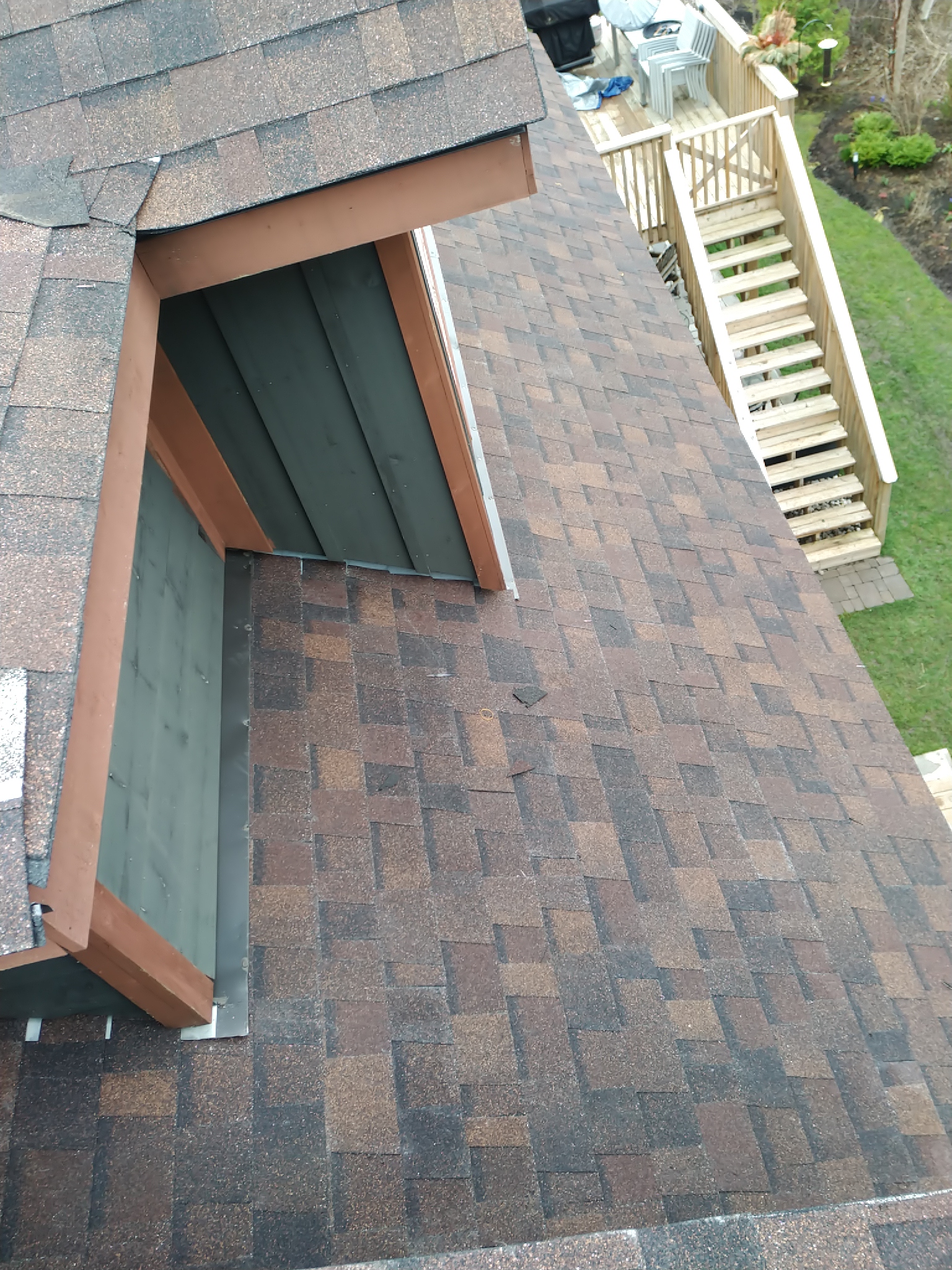When it comes to roofing, selecting the right material is crucial, especially in hot summer climates. The intense heat and prolonged sun exposure can take a toll on your roof, leading to higher energy costs and potential damage. In this article, Ainger Roofing, a roofing contractor in Barrie, Ontario will explore the best roofing materials suited for hot summer climates, helping you make an informed decision for your home.

1. Metal Roofing
Metal roofing is an excellent choice for hot summer climates due to its durability and heat-reflective properties. It is typically made of aluminum, steel, or copper, and its reflective surface helps to reduce heat absorption. Metal roofs are also known for their longevity, low maintenance requirements, and resistance to fire and pests. Additionally, they can be coated with special finishes that enhance their heat-reflecting capabilities, keeping your home cooler and reducing energy costs.
2. Clay or Concrete Tiles
Clay or concrete tiles are another popular option for hot climates. These materials have been used for centuries and are renowned for their ability to withstand high temperatures. Clay and concrete tiles have excellent thermal resistance, preventing heat transfer into the home. They also provide natural ventilation, allowing air to circulate beneath the tiles, further aiding in temperature regulation. While they can be more expensive than other roofing materials, their durability and aesthetic appeal make them a worthy investment.
3. Asphalt Shingles with Cool Roof Coatings
Asphalt shingles are a common and cost-effective roofing material. In hot summer climates, choosing asphalt shingles with cool roof coatings can significantly improve their heat-reflective properties. Cool roof coatings are designed to reflect more sunlight and absorb less heat, keeping the roof and the interior of the home cooler. These coatings typically have light-colored pigments or reflective granules embedded in them. When combined with proper attic insulation, cool roof coatings can help reduce energy consumption and create a more comfortable living environment.
4. Thermoplastic Olefin (TPO) Roofing
TPO roofing is a single-ply membrane roofing material known for its energy efficiency and heat resistance. It is made of a blend of plastic and rubber compounds, providing excellent durability and resistance to ultraviolet (UV) radiation. TPO roofs are highly reflective and have a white or light-colored surface, which helps to reflect sunlight and reduce heat absorption. They are also resistant to tears, punctures, and chemical damage, making them suitable for hot climates with intense sun exposure.
5. Green Roofs
Green roofs, also known as living roofs, have gained popularity as an eco-friendly option for hot climates. These roofs feature a layer of vegetation and soil, creating a natural barrier against heat. The plants on the roof absorb sunlight and convert it into energy through photosynthesis, reducing heat transfer into the building. Green roofs provide insulation, improve air quality, and contribute to stormwater management. While they require specialized installation and maintenance, they offer unique benefits in terms of energy efficiency and environmental sustainability.
FAQ’s About Roofing Materials for Hot Summer Climates
Q1: Can I install metal roofing over my existing roof?
A1: In some cases, metal roofing can be installed over an existing roof. However, it’s best to consult with a professional roofer to evaluate the condition of your current roof and determine if an overlay installation is suitable.
Q2: Do cool roof coatings require regular maintenance?
A2: Cool roof coatings generally require minimal maintenance. However, periodic inspections and cleaning may be necessary to remove debris and ensure optimal performance. Consult the manufacturer’s guidelines or seek professional advice for specific maintenance recommendations.
Q3: Can any building support the weight of a green roof?
A3: Green roofs are heavier than traditional roofing materials, so it’s important to assess the structural capacity of your building. Consult with a structural engineer or roofing professional to determine if your building can support the additional weight of a green roof.
Q4: Are clay or concrete tiles suitable for all architectural styles?
A4: Clay or concrete tiles can complement a wide range of architectural styles. However, their weight and installation requirements may not be suitable for all structures. Consult with a roofing professional to assess the compatibility of clay or concrete tiles with your specific architectural design.
Q5: Do roofing materials for hot climates affect indoor comfort?
A5: Yes, the choice of roofing material can have an impact on indoor comfort. Heat-reflective materials, such as metal roofing, cool roof coatings, and green roofs, can help reduce heat transfer into the home, creating a cooler and more comfortable living environment.
Conclusion
Selecting the right roofing material for hot summer climates is essential for maintaining a comfortable and energy-efficient home. Metal roofing, clay or concrete tiles, asphalt shingles with cool roof coatings, TPO roofing, and green roofs are all viable options to consider. Each material offers unique benefits in terms of durability, heat resistance, energy efficiency, and aesthetic appeal. When choosing a roofing material, consider factors such as durability, cost, maintenance requirements, and compatibility with your home’s architectural style. Ainger Roofing, a roofing contractor in Barrie, Ontario says that consulting with a professional roofer can help you make an informed decision and ensure a successful installation that withstands the challenges of hot summer climates.
Choosing the Right Roofing Material for Hot Summer Climates
When it comes to roofing, selecting the right material is crucial, especially in hot summer climates. The intense heat and prolonged sun exposure can take a toll on your roof, leading to higher energy costs and potential damage. In this article, Ainger Roofing, a roofing contractor in Barrie, Ontario will explore the best roofing materials suited for hot summer climates, helping you make an informed decision for your home.
1. Metal Roofing
Metal roofing is an excellent choice for hot summer climates due to its durability and heat-reflective properties. It is typically made of aluminum, steel, or copper, and its reflective surface helps to reduce heat absorption. Metal roofs are also known for their longevity, low maintenance requirements, and resistance to fire and pests. Additionally, they can be coated with special finishes that enhance their heat-reflecting capabilities, keeping your home cooler and reducing energy costs.
2. Clay or Concrete Tiles
Clay or concrete tiles are another popular option for hot climates. These materials have been used for centuries and are renowned for their ability to withstand high temperatures. Clay and concrete tiles have excellent thermal resistance, preventing heat transfer into the home. They also provide natural ventilation, allowing air to circulate beneath the tiles, further aiding in temperature regulation. While they can be more expensive than other roofing materials, their durability and aesthetic appeal make them a worthy investment.
3. Asphalt Shingles with Cool Roof Coatings
Asphalt shingles are a common and cost-effective roofing material. In hot summer climates, choosing asphalt shingles with cool roof coatings can significantly improve their heat-reflective properties. Cool roof coatings are designed to reflect more sunlight and absorb less heat, keeping the roof and the interior of the home cooler. These coatings typically have light-colored pigments or reflective granules embedded in them. When combined with proper attic insulation, cool roof coatings can help reduce energy consumption and create a more comfortable living environment.
4. Thermoplastic Olefin (TPO) Roofing
TPO roofing is a single-ply membrane roofing material known for its energy efficiency and heat resistance. It is made of a blend of plastic and rubber compounds, providing excellent durability and resistance to ultraviolet (UV) radiation. TPO roofs are highly reflective and have a white or light-colored surface, which helps to reflect sunlight and reduce heat absorption. They are also resistant to tears, punctures, and chemical damage, making them suitable for hot climates with intense sun exposure.
5. Green Roofs
Green roofs, also known as living roofs, have gained popularity as an eco-friendly option for hot climates. These roofs feature a layer of vegetation and soil, creating a natural barrier against heat. The plants on the roof absorb sunlight and convert it into energy through photosynthesis, reducing heat transfer into the building. Green roofs provide insulation, improve air quality, and contribute to stormwater management. While they require specialized installation and maintenance, they offer unique benefits in terms of energy efficiency and environmental sustainability.
FAQ’s About Roofing Materials for Hot Summer Climates
Q1: Can I install metal roofing over my existing roof?
A1: In some cases, metal roofing can be installed over an existing roof. However, it’s best to consult with a professional roofer to evaluate the condition of your current roof and determine if an overlay installation is suitable.
Q2: Do cool roof coatings require regular maintenance?
A2: Cool roof coatings generally require minimal maintenance. However, periodic inspections and cleaning may be necessary to remove debris and ensure optimal performance. Consult the manufacturer’s guidelines or seek professional advice for specific maintenance recommendations.
Q3: Can any building support the weight of a green roof?
A3: Green roofs are heavier than traditional roofing materials, so it’s important to assess the structural capacity of your building. Consult with a structural engineer or roofing professional to determine if your building can support the additional weight of a green roof.
Q4: Are clay or concrete tiles suitable for all architectural styles?
A4: Clay or concrete tiles can complement a wide range of architectural styles. However, their weight and installation requirements may not be suitable for all structures. Consult with a roofing professional to assess the compatibility of clay or concrete tiles with your specific architectural design.
Q5: Do roofing materials for hot climates affect indoor comfort?
A5: Yes, the choice of roofing material can have an impact on indoor comfort. Heat-reflective materials, such as metal roofing, cool roof coatings, and green roofs, can help reduce heat transfer into the home, creating a cooler and more comfortable living environment.
Conclusion
Selecting the right roofing material for hot summer climates is essential for maintaining a comfortable and energy-efficient home. Metal roofing, clay or concrete tiles, asphalt shingles with cool roof coatings, TPO roofing, and green roofs are all viable options to consider. Each material offers unique benefits in terms of durability, heat resistance, energy efficiency, and aesthetic appeal. When choosing a roofing material, consider factors such as durability, cost, maintenance requirements, and compatibility with your home’s architectural style. Ainger Roofing, a roofing contractor in Barrie, Ontario says that consulting with a professional roofer can help you make an informed decision and ensure a successful installation that withstands the challenges of hot summer climates.

